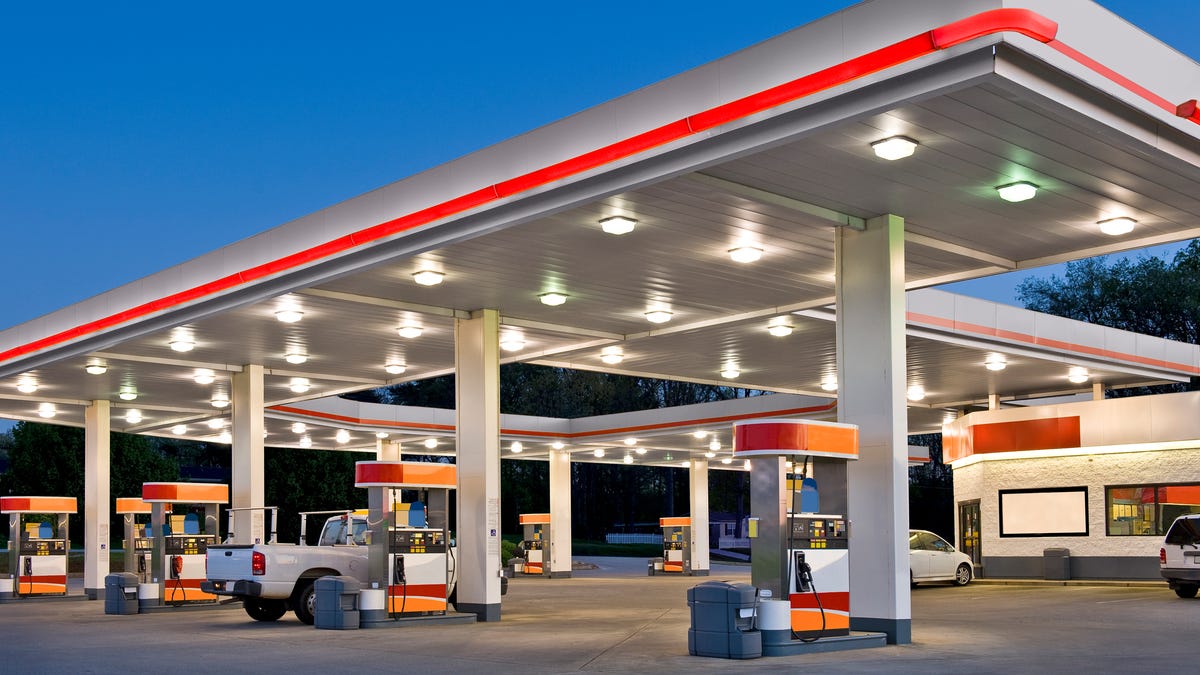3.5 Wellhead
Wellheads can involve dry or subsea completion. Dry completion means that
the well is onshore or on the topside structure on an offshore installation.
Subsea wellheads are located underwater on a special sea bed template.
The wellhead has equipment
mounted at the opening of the well to
regulate and monitor the extraction of
hydrocarbons from the underground
formation. This also prevents oil or
natural gas leaking out of the well,
and prevents blow-outs due to high
pressure formations. Formations that
are under high pressure typically
require wellheads that can withstand
a great deal of upward pressure from
the escaping gases and liquids.
These must be able to withstand
pressures of up to 140 MPa (1,400
Bar). The wellhead consists of three
components: the casing head, the
tubing head, and the “Christmas tree.
”
Photo: Vetco Gray
A typical Christmas tree, composed of
a master gate valve, a pressure
gauge, a wing valve, a swab valve
and a choke is shown above. The
Christmas tree may also have a number of check valves. The functions of
these devices are explained below. Ill: Vetco Gray
At the bottom we find the casing head and casing hangers.
The casing is screwed, bolted or welded to the hanger. Several valves and
plugs are normally fitted to give access to the casing. This permits the casing
33
to be opened, closed, bled down, and in some cases, allow the flowing well
to be produced through the casing as well as the tubing. The valve can be
used to determine leaks in casing, tubing or the packer, and is also used for
lift gas injection into the casing.
The tubing hanger (also
called a donut) is used to
position the tubing correctly in
the well. Sealing also allows
Christmas tree removal with
pressure in the casing.
Master gate valve. The
master gate valve is a high
quality valve. It provides full
opening, which means that it
opens to the same inside
diameter as the tubing so that
specialized tools may be run
through it. It must be capable
of holding the full pressure of
the well safely for all
anticipated purposes. This
valve is usually left fully open
and is not used to control flow.
Pressure gauge. The
minimum instrumentation is a
pressure gauge placed above
the master gate valve before
the wing valve. In addition,
other instruments such as a
temperature gauge are
normally fitted.
Wing valve. The wing valve can be a gate or ball valve. When shutting in
the well, the wing gate or valve is normally used so that the tubing pressure
can be easily read.
Swab valve. The swab valve is used to gain access to the well for wireline
operations, intervention and other workover procedures (see below). On top
of it is a tree adapter and cap that mates with a range of equipment.
34
Variable flow choke valve. The variable flow choke valve is typically a large
needle valve. Its calibrated opening is adjustable in 1/64 inch increments
(called beans). High-quality steel is used in order to withstand the highspeed flow of abrasive materials that pass through the choke, usually over
many years, with little damage except to the dart or seat. If a variable choke
is not required, a less expensive positive choke is normally installed on
smaller wells. This has a built-in restriction that limits flow when the wing
valve is fully open.
Vertical tree. Christmas trees can also be horizontal where the master,
wing and choke are on a horizontal axis. This reduces the height and may
allow easier intervention. Horizontal trees are especially used on subsea
wells.
3.5.1 Subsea wells
Subsea wells are essentially the
same as dry completion wells.
Mechanically, however, they are
placed in a subsea structure
(template) that allows the wells to
be drilled and serviced remotely
from the surface, and protected
from damage,
e.g., from trawlers.
The wellhead is placed in a slot
in the template where it mates to
the outgoing pipeline as well as
hydraulic and electric control
signals. Ill: Statoil
Control is from the
surface, where a hydraulic
power unit (HPU)
provides power to the
subsea installation via an
umbilical. The umbilical
is a composite cable
containing tension wires,
hydraulic pipes, electrical
power, control and
communication signals. A
control pod with inert gas and/or oil protection contains control electronics,
and operates most equipment via hydraulic switches. More complex subsea
solutions may contain subsea separation/stabilization and electrical
35
multiphase pumping. This may be necessary if reservoir pressure is low,
offset (distance to main facility) is long or there are flow assurance problems
so that the gas and liquids will not stably flow to the surface.
The product is piped back through pipelines and risers to the surface. The
main choke may be located topside.
3.5.2 Injection
Wells are also divided into production and injection wells. The former are for
production of oil and gas. Injection wells are drilled to inject gas or water into
the reservoir. The purpose of injection is to maintain overall and hydrostatic
reservoir pressure and force the oil toward the production wells. When
injected water reaches the production well, it is called “injected water
breakthrough.” Special logging instruments, often based on radioactive
isotopes added to injection water, are used to detect breakthrough.
Injection wells are fundamentally the same as production wellheads. The
difference is their direction of flow and, therefore, mounting of some
directional components, such as the choke.


